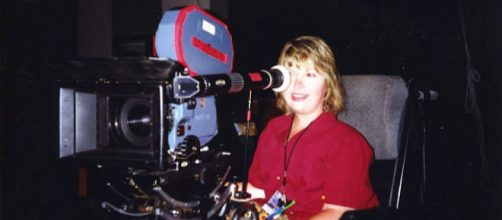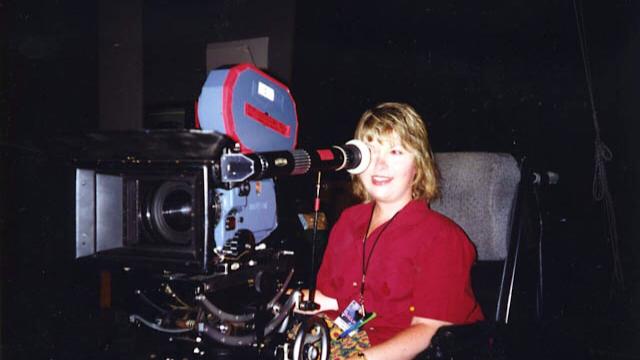Jenni Gold developed an interest in filmmaking as a teenager, cutting her teeth on short 8mm films. She’d later attend the University of Central Florida, where Jenni would go on to create some award-winning shorts, and commercials, ultimately resulting in an opportunity to direct her first feature.
In addition to her feature work, Jenni - the only female wheelchair-using Director Member of the Directors Guild of America - serves on the board of the Geena Davis Institute on Gender in Media and has worked for such well-known clients as The Christopher and Dana Reeve Foundation.
An advocate for total inclusion, Jenni’s latest film ‘’CinemAbility’’ explores how the media impacts society and the effect they have on inclusion. A huge roster of names appears in the film including Marlee Matlin, Ben Affleck, Jamie Foxx, Beau Bridges, and Kyle MacLachlan.
Jenn spoke about all of this and more via an exclusive interview on September 24, 2018.
Movies, short films, and the entertainment industry
Meagan Meehan (MM): Jenni, tell us about your beginnings; have you always been in the entertainment industry and do you remember your first job?
Jenni Gold (JG): I think I learned a lot at an early age from being in front of the cameras on the Jerry Lewis Telethons. I was always more interested in what was going on behind the scenes.
In high school, I loved still photography, and that lead to my doing short films 8mm film and video. Then I went to film school at the University of Central Florida and made some award-winning shorts that lead to my first feature film. I moved to LA to follow my dreams in 1998. I have a passion for Hollywood from classic Movies to current productions, and I’m proud to be a part of this fascinating industry!
While still in college, I started off editing for a commercial company. I cut things like the “Frosty Mug” commercial. I think my experience as an editor makes me a better director because I know how a scene will be edited before I even shoot it. And if there is a problem with a shoot, I know how to fix it in the post.
MM: And what was the goal when you got into the game – was it to make movies?
JG: Yes, I always loved telling visual stories. At an early age, I remember seeing two films that made a huge impact on me, “Jaws” and “Rocky 2,” because both films had the audience jumping out of their seats. I wanted to tell stories that could impact people like that. So, I set goals to become a director member of the D.G.A., which I did in 1997, and to make films that people would enjoy, which I try to do!
MM: You’ve been involved in quite a few now – which are you the proudest of?
JG: Each one is special for different reasons, so it is impossible to choose. I just focus on the one that’s coming out next.
MM: I imagine it’s must different producing shorts to feature films? What did you learn from doing shorts that helped prep you for full-length movies?
JG: After I had produced and directed my award-winning thirty-minute short, I thought that a feature would just be three times the amount of work, but it is not. It is more like to the 3rd power! Likewise, I thought that a doc would be easier than a narrative film, but I was wrong again. It takes so much more time to produce a doc. However, the general principles are the same. Treat your cast and crew with respect, build a team spirit, and feed and water them well!
MM: How long did “CinemAbility” take to come together?
JG: Including production, post, and now to distribution it has been over ten years, but it has been a labour of love.
Stories, actors, and disability month
MM: Why did you think it was the right time for this story?
JG: We have been in post-production on this film for several years and have even screened it at a few festivals along the way, and each year as Oscars So White, Black Lives Matter, and MeToo makes headlines, we can’t help but think that some of this newfound awareness about diversity and inclusion will help pave our way. Yet, we still notice that few include disability in the discussions about inclusion. We’ve long said that disability inclusion will be the final fight of the civil rights movement, and we still believe that to be true. So, it seems like now is a perfect time!
MM: Was it easy to get all the actors involved? Who was the most passionate of the bunch about getting involved?
JG: Yes, because my wheelchair goes 12 mph and I can outrun them.
But seriously, once we made contact, people were very receptive to sharing their stories because they believe in our mission of inclusion.
MM: Geena Davis--can you talk about her participation?
JG: Geena was aware of the lack of inclusion of women in film and TV and the impact that had on girls and so she formed The Geena Davis Institute on Gender In Media. Since we have similar conclusions and goals for total inclusion she participated in “CinemAbility” and I’m on her Board of Advisors. Together we hope to elucidate how Hollywood can make the media more properly represented and thereby the world more inclusive.
MM: Can you explain why October is such an important month for disability and how we can support?
JG: Each year the United States Government declares October to be National Disability Employment Awareness Month to shine a light on disability employment issues and to celebrate the many and varied contributions of America's workers with disabilities. However, there are still a vast number of people who want to work and are capable but are overlooked by employers due to preconceived notions about the contributions that a person with a disability can make.
These mistaken ideas are formed in part by the images we see in the media. This is why we hope to get “CinemAbility” seen by everyone so that it serves as a catalyst for societal changes that will help people with disabilities to be included in diversity discussions and every aspect of society! As Winston Churchill once said, “Never, never, never give up.” Er…or was that Gary Oldman in “Darkest Hour.”



